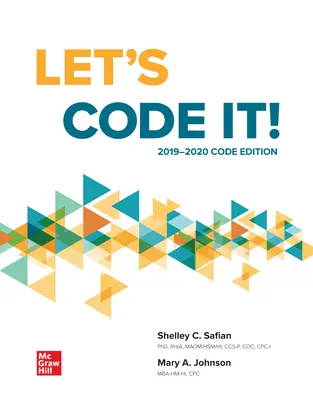Four Pillars of Medical Coding Leadership
Published October 19, 2020
Most often, when people speak about the health care team, they are referring to clinicians; you know, physicians and nurses. Sometimes, they will include the administrators; the executive suite. However, the health information managers and medical coding professionals are the threads that keep the fabric of healthcare together. We are the connection between the clinical and administrative halves of the industry.
There are four pillars of leadership that we can implement to ensure that we connect the best practices of the clinicians and the legal and optimal reimbursement the administrators need:
- Support clinical documentation improvement and query. This is really about effective communication between medical coders and clinicians. We think differently and we have different perspectives, however, we have the same goal: accurate information which will coordinate retrospective, concurrent, and future care. When we work together and help physicians learn what details are needed; clinicians benefit from more thorough documentation for the next patient encounter. Effective continuity of care depends upon complete information. Certified medical coders have learned anatomy and pathophysiology along with medical terminology, so they can interpret the records accurately. They cannot substitute their knowledge for that of a professional clinician, but they are qualified to have a conversation and ask questions. This is part of the back-up system to ensure that critical information does not accidentally get missed which can impact both patient care and the revenue stream.
- Ensure you are working with the most updated information. Medical coders understand the critical importance of staying current, working within a constantly evolving sector of the industry. Every October 1st, updated ICD-10-CM and ICD-10-PCS code sets are released, and every January 1st, updated CPT and HCPCS Level II code sets are released… with new codes, old codes that have been deleted and can no longer be used, and some code descriptions that have been revised. The only way to do the job of a medical coder accurately is to understand and work with current codes. Without them, claims to third-party payers will be rejected or denied. Then, the facility’s revenue stream will be negatively impacted and the possibility that a patient may not get a needed treatment due to the shifted financial burden comes closer to a reality. Right now, we are in the middle of a world-wide pandemic. New codes have been created to accurately report COVID-19 diagnoses and procedures. Those who lead the medical coding department must guarantee that all coders have been trained to use these new codes properly, along with any others that come along.
- Communicate with admissions and front desk personnel. While our clinical staff enter the data directly related to the health of the patient, the admissions and front desk personnel are the staffers who collect the patient’s demographic information, from address and phone number to insurance policy number. Errors in data entry can interfere with the processing of claims, thereby hindering the revenue flow. Medical coding leadership must be certain these team members understand the role they play in reimbursement and the revenue stream. They have the responsibility to protect the integrity of the data relating to the patient’s demographics that are key to claims approvals.
- Check, double-check, then submit. Accuracy is absolutely the most important element of data entry, data collection, and of course, data analysis. We all feel the pressure of time… too much work, not enough hours in the day. Still, we have the obligation to our patients and our facility to slow down sufficiently to confirm the information was entered correctly. We are human and can easily hit the wrong keys in the wrong order. Remember, we are responsible. Medical coding specialists sit in an office and therefore, may not feel a connection to real patients, their care, or their outcomes. Yet, we are directly involved. Those of us in health information management are the keepers and protectors of every piece of data – from the patient’s middle name to the date they got their flu vaccine, and so much more. Now is the time to build the habit of taking that nano-second to double check your entries before you submit your work. This is an important stepping-stone in your path to success!
Medical coders can each take a stand, on behalf of our patients and our facilities, to confirm complete documentation, determine specific and accurate codes, ensure complete demographic details, and double-check all entries before hitting that submit button. This all ties together to support improved patient outcomes and ensuring the facility has the revenue it needs to continue providing the highest quality of care.

Shelley C. Safian, PhD, RHIA
Shelley Safian has been teaching medical coding and health information management for more than 15 years, at both on-ground and online campuses. In addition to her regular teaching responsibilities at University of Maryland Global Campus and Colorado State University-Global, she volunteers with the AHIMA Foundation Research Network (AFRN) and the Central Florida Health Information Management Association (CFHIMA). She regularly presents webinars/seminars and writes about coding for the Just Coding newsletter. Safian is the course author for multiple distance education courses on various coding topics, including ICD-10-CM, ICD-10-PCS, CPT, and HCPCS Level II coding.

Mary A. Johnson, MBA-HM-HI
Mary Johnson is the Medical Record Coding Program Director at Central Carolina Technical College in Sumter, South Carolina. She is also an adjunct faculty member for Southern New Hampshire University. Her background includes corporate train¬ing using both on-campus and online platforms. Johnson also designs and implements customized coding curricula. Johnson received her Bachelor of Arts dual degree in Business Administration and Marketing from Columbia College, and earned a Masters of Business Administration with a dual focus in Healthcare Management and Health Informatics from New England College. Johnson is a Certified Professional Coder (CPC) credentialed through the American Academy of Professional Coders (AAPC).
